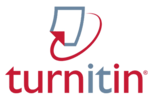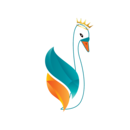Authentic Assessment of Literacy and Numeracy Based on Local Wisdom at Elementary School Level in Ternate City
Abstract
Purpose of the study: This study aims to describe the implementation of authentic assessment of literacy and numeracy based on local wisdom in elementary schools in Ternate City.
Methodology: A mixed methods approach was employed involving both qualitative and quantitative data collection. The participants were 200 fifth-grade students from four schools Elementary School 1, Elementary School 2, Islamic Elementary School Nurul Hasan, and Islamic Elementary School Fathul Munir selected proportionally. Data were gathered through classroom observations, documentation, and authentic tasks integrated with local cultural contexts. Qualitative data were analyzed thematically, while descriptive statistics were used for quantitative analysis.
Main Findings: The findings reveal that authentic assessment based on local wisdom in Ternate has not yet been systematically implemented in literacy and numeracy learning. However, several innovative teacher practices emerged, such as using the Ternate language for numeracy tasks, conducting literacy activities through interviews with market vendors, and applying mathematical concepts in real-life contexts like market transactions. These practices effectively connected students’ cultural experiences with learning objectives, enhancing engagement and conceptual understanding.
Novelty/Originality of this study: The novelty of this study lies in integrating Ternate’s local wisdom as a contextual foundation for authentic literacy and numeracy assessment, bridging the gap between assessment theory and culturally grounded educational practice. The study contributes to the development of context-sensitive assessment instruments that promote equity, relevance, and cultural identity in education. Furthermore, it provides empirical evidence supporting culturally responsive pedagogy as a strategy for improving learning outcomes in diverse local contexts.
References
J. A. Alamprese, and K. Hoogland, “Promoting literacy and numeracy in adult learning and education,” New Directions for Adult and Continuing Education, vol. 2025, no. 185, pp. 33-38, 2025, doi: 10.1002/ace.20555.
Hanemann, U., & Robinson, C. (2022). Rethinking literacy from a lifelong learning perspective in the context of the Sustainable Development Goals and the International Conference on Adult Education. International Review of Education, 68(2), 233-258, 2022, doi: 10.1007/s11159-022-09949-7.
Gupta, R. (2021). The role of pedagogy in developing life skills. Margin: The Journal of Applied Economic Research, 15(1), 50-72, 2021, doi: 10.1177/0973801020974786.
D. A. Kurniawan, A. Astalini, D. Darmaji, T. Tanti, and S. Maryani, “Innovative learning: Gender perception of e-module linear equations in mathematics and physics,” Indonesian Journal on Learning and Advanced Education (IJOLAE), vol. 4, no. 2, pp, 92-106, 2022, doi: 10.23917/ijolae.v4i2.16610.
E. Miller, and I. Konstantinou, “Using reflective, authentic assessments to embed employability skills in higher education,” Journal of Work-Applied Management, vol. 14, no. 1, pp. 4-17, 2022, doi: 10.1108/JWAM-02-2021-0014.
Z. Y. Wong, and G. A. D. Liem, “Student engagement: Current state of the construct, conceptual refinement, and future research directions,” Educational Psychology Review, vol. 34, no. 1, pp. 107-138, 2022, doi: 10.1007/s10648-021-09628-3.
T. Tanti, A. Astalini, D. A. Kurniawan, D. Darmaji, T. O. Puspitasari, and I. Wardhana, “Attitude for physics: The condition of high school students,” Jurnal Pendidikan Fisika Indonesia, vol. 17, no. 2, pp. 126-132, 2021, doi: 10.15294/jpfi.v17i2.18919.
N. Bergdahl, “Engagement and disengagement in online learning,” Computers & Education, vol. 188, pp. 104561, 2022, doi: 10.1016/j.compedu.2022.104561.
G. Maimaiti, C. Jia, and K. F. Hew, “Student disengagement in web-based videoconferencing supported online learning: an activity theory perspective,” Interactive Learning Environments, vol. 31, no. 8, pp. 4883-4902, 2023, doi: 10.1080/10494820.2021.1984949.
S. A. Sakti, S. Endraswara, and A. Rohman, “Revitalizing local wisdom within character education through ethnopedagogy apporach: A case study on a preschool in Yogyakarta,” Heliyon, vol. 10, no. 10, 2024, doi: 10.1016/j.heliyon.2024.e31370.
Y. Wijayanti, “Enhancing students’ cultural identity through history education based on local wisdom of Kagaluhan Values,” Educational Process: International Journal, vol. 14, pp. e2025075, 2025, doi: 10.22521/edupij.2025.14.75.
R. Machfiroh, I. Rohayani, and D. Hidayat, “Strategies for revitalizing tri tangtu local wisdom among college students,” Al-Ishlah: Jurnal Pendidikan, vol. 16, no. 1, pp. 605-615, 2024, doi: 10.35445/alishlah.v16i1.4940.
T. Tanti, D. Deliza, and S. Hartina, “The effectiveness of using smartphones as mobile-mini labs in improving students’ beliefs in physics,” JIPF (Jurnal Ilmu Pendidikan Fisika), vol. 9, no. 3, pp. 387-394, 2024, doi: 10.26737/jipf.v9i3.5185.
R. Rasidi, G. Istiningsih, R. F. Masithoh, and M. I. Rosyidi, “Education based on local wisdom: An alternative model for the integration of cultural values in the school curriculum in Indonesia,” International Journal of Contemporary Studies in Education, vol. 4, no. 2, pp. 114-135, 2025, doi: 10.56855/ijcse.v4i2.1521.
T. J. Age, “Performance-Based assessment: A transformative approach to enhancing mathematics learning in ubuntu classrooms across Sub-Saharan Africa,” European Journal of STEM Education, vol. 10, no. 1, pp. 04, 2025, doi: 10.20897/ejsteme/16420.
T. Tanti, W. Utami, D. Deliza, and M. Jahanifar, “Investigation in vocation high school for attitude and motivation students in learning physics subject”, Jor. Eva. Edu, vol. 6, no. 2, pp. 479-490, 2025, doi: 10.37251/jee.v6i2.1452.
C. M. Evans, “Applying a culturally responsive pedagogical framework to design and evaluate classroom performance-based assessments in Hawai ‘i,” Applied Measurement in Education, vol. 36, no. 3, pp. 269-285, 2023, doi: 10.1080/08957347.2023.2214655.
OECD. PISA 2018 results (Volume I): What students know and can do. OECD Publishing, 2019, doi: 10.1787/5f07c754-en.
M. J. D. Q. Abbas, and S. Husssain, “Low literacy rate at primary level: Identification of causes and impacts,” Pakistan Social Sciences Review, vol. 5, no. 2, pp. 492-506, 2021, doi: 10.35484/pssr.2021(5-II)39.
O. Salubi, and U. Majavu, “Toward the development of a framework for literacy support and promotion by public libraries in financially and infrastructurally low-resourced territories,” Reference Services Review, vol. 52, no. 2, pp. 218-230, 2024, doi: 10.1108/RSR-06-2023-0056.
A. C. Starks, and S. M. Reich, ““What about special ed?“: Barriers and enablers for teaching with technology in special education,” Computers & Education, vol. 193, pp. 104665, 2023, doi: 10.1016/j.compedu.2022.104665.
A. Gumartifa, S. Sofendi, and S. Mirizon, “Enhancing English literacy through ethnopedagogy: A focus on cultural relevance in teaching practices,” Journal of Languages and Language Teaching, vol. 13, no. 1, pp. 294-305, 2025, doi: 10.33394/jollt.v13i1.12934.
T. Tanti, D. Darmaji, A. Astalini, D. A. Kurniawan, and M. Iqbal, “Analysis of user responses to the application of web-based assessment on character assessment,” Journal of education technology, vol. 5, no. 3, pp. 356-364, 2021, doi: 10.23887/jet.v5i3.33590.
D. P. Ratri, S. Rachmajanti, M. Anugerahwati, E. D. Laksmi, and A. Gozali, “Fostering cultural competence: developing an English syllabus for young learners in the Indonesian EFL context with emphasis on local culture to maintain students’ identity,” Cogent Education, vol. 12, no. 1, pp. 2440177, 2025, doi: 10.1080/2331186X.2024.2440177.
A. C. Dewi, M. N. Hakim, and C. Djafar, “Integrating local culture in the development of indonesian language teaching materials for general education,” AL-ISHLAH: Jurnal Pendidikan, vol. 17, no. 2, pp. 2961-2978, 2025, doi, 10.35445/alishlah.v17i2.5891.
E. Purwaningsih, and R. Ridha, “The role of traditional cultural values in character education,” Pakistan Journal of Life & Social Sciences, vol. 22, no. 2, 2024, doi: 10.57239/PJLSS-2024-22.2.00396.
E. Setyowati, H. Hendratno, and W. Sukartiningsih, “Assessing the impact of local wisdom on Indonesian language learning in primary schools. Scaffolding: Jurnal Pendidikan Islam dan Multikulturalisme, vol. 6, no. 3, pp. 198-212, 2024, doi: 10.37680/scaffolding.v6i3.6473.
G. Wiggins and J. McTighe, Understanding by Design, 2nd ed. Alexandria, VA: ASCD, 2005.
H. Freudenthal, Revisiting Mathematics Education: China Lectures. Dordrecht: Kluwer, 1991.
L. Darling-Hammond, and F. Adamson, Beyond the bubble test: How performance assessments support 21st-century learning. Jossey-Bass, 2014.
K. K. Grant, Educators’ Perceptions of Culturally Relevant Pedagogy: An Exploratory Qualitative Case Study (Doctoral dissertation, University of Phoenix), 2024.
L. S. Vygotsky, Mind in Society: The Development of Higher Psychological Processes. Cambridge, MA: Harvard Univ. Press, 1978. doi: 10.2307/j.ctvjf9vz4.
I. Widiastuti, “Assessing the impact of education policies in Indonesia: Challenges, achievement, and future direction,” AL-ISHLAH: Jurnal Pendidikan, vol. 17, no. 2, pp. 1955-1964, 2025, doi: 10.35445/alishlah.v17i2.6803.
M. Arsyad Arrafii, “Assessment reform in Indonesia: Contextual barriers and opportunities for implementation,” Asia Pacific Journal of Education, vol. 43, no. 1, pp. 79-94, 2023, doi: 10.1080/02188791.2021.1898931.
L. Lismawati, A. R. Ramadhan, and A. P. Astuti, “Prophetic framework in educational evaluation: A qualitative study on minimum competency assessment in Indonesia,” Jurnal Pendidikan Agama Islam (Journal of Islamic Education Studies), vol. 12, no. 1, pp. 1-22, 2024, doi: 10.15642/jpai.2024.12.1.1-22.
L. Xu, Y. Li, J. Cui, and F. Saleem, “Assessing the moderating effects of tertiary education policy on the relationship between education system factors and carbon emissions in China,” Discover Sustainability, vol. 6, nol. 1, pp. 990, 2025, doi: 10.1007/s43621-025-01929-9.
E. J. Barrientos Hernán, V. M. López-Pastor, E. Lorente-Catalán, and D. Kirk, “Challenges with using formative and authentic assessment in physical education teaching from experienced teachers’ perspectives,” Curriculum Studies in Health and Physical Education, vol. 14, no. 2, pp. 109-126, 2023, doi: 10.1080/25742981.2022.2060118.
A. S. Saher, A. M. J. Ali, D. Amani, and F. Najwan, “Traditional versus authentic assessments in higher education,” Pegem Journal of Education and Instruction, vol. 12, no. 1, pp. 283-291, 2022, doi: 10.47750/pegegog.12.01.29.
D. H. Murphy, J. L. Little, and E. L. Bjork, “The value of using tests in education as tools for learning—not just for assessment,” Educational Psychology Review, vol. 35, no. 3, pp. 89, 2023, doi: 10.1007/s10648-023-09808-3.
J. H. Nieminen, M. Bearman, and R. Ajjawi, “Designing the digital in authentic assessment: Is it fit for purpose?,” Assessment & Evaluation in Higher Education, vol. 48, no. 4, pp. 529-543, 2023, doi: 10.1080/02602938.2022.2089627.
R. Fadilah, H. Y. Ayudhia, V. S. Chairani, and F. Afni, “Assessment of English language teaching for 21st century: Teachers’ perspectives on traditional and alternative assessment,” JADEs Journal of Academia in English Education, vol. 4, no. 1, pp. 108-130, 2023, doi: 10.32505/jades.v4i1.6023.
X. Liao, X. Zhang, Z. Wang, and H. Luo, “Design and implementation of an AI‐enabled visual report tool as formative assessment to promote learning achievement and self‐regulated learning: An experimental study,” British Journal of Educational Technology, vol. 55, no. 3, pp. 1253-1276, 2024, doi: 10.1111/bjet.13424.
Koretsky, M. D., McColley, C. J., Gugel, J. L., & Ekstedt, T. W. (2022). Aligning classroom assessment with engineering practice: A design‐based research study of a two‐stage exam with authentic assessment. Journal of Engineering Education, 111(1), 185-213, 2022, doi: 10.1002/jee.20436.
Copyright (c) 2025 Ode Zulaeha, Harina Sangadji

This work is licensed under a Creative Commons Attribution 4.0 International License.
Authors who publish with this journal agree to the following terms:
- Authors retain copyright and acknowledge that the Integrated Science Education Journal is the first publisher licensed under a Creative Commons Attribution 4.0 International License.
- Authors are able to enter into separate, additional contractual arrangements for the non-exclusive distribution of the journal's published version of the work (e.g., post it to an institutional repository or publish it in a book), with an acknowledgment of its initial publication in this journal.
- Authors are permitted and encouraged to post their work online (e.g., in institutional repositories or on their website) prior to and during the submission process, as it can lead to productive exchanges and earlier and greater citation of published work.








.png)
.png)





